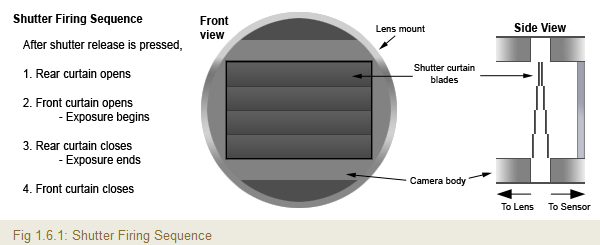Understanding exposure – how it can help improve your photography
Digital cameras can handle some exposure error, but understanding exposure properly can certainly help improve your photography.Exposure is all about how much light you let into the camera.
Too much, and your photos will be washed out, too little and they'll be too dark.
It is possible to correct a poorly exposed image using software afterwards.
However, there are a few reasons why you should avoid this. Some of those reasons are listed below:
- If you've overexposed you'll end up with blown highlights– you can never recover detail in these areas of a photograph.
- If you've underexposed, the same applies as with blown highlights. There's no data recorded in these areas, and you can never recover any detail.
- It's difficult to get good contrast in poorly exposed photos
- It's difficult to get good colour saturation in poorly exposed photographs
- It takes up lots of your time correcting things later on! Better to get it right when you take the photo
- Light meters in cameras can be fooled by certain lighting conditions.
Consequently, it helps to have an understanding of exposure before you press the shutter!
The information here is aimed at digital SLR owners. This is because if you use a compact digital camera you have limited options when it comes to adjusting exposure.
Compact digital cameras will work out the exposure for you, so you don't have to!
It's still worth reading on though, as it might give you a better understanding of how your camera is working, and you never know, one day you might decide to splash out on a digital SLR!
And if all this talk of properly understanding exposure completely puts you off ever getting a digital SLR, don't worry. You can always set a digital SLR to "auto", and it will handle the exposure for you; or you can come back to this page and take control of setting exposure for yourself!
Understanding exposure - what affects exposure?
There are only three things that can make a difference to the exposure. And two of those involve how much light comes into the camera.- The shutter speed (see also creative use of shutter speed)
- The aperture (see also depth of field)
- The "film speed"
Understanding exposure – Shutter speed
In understanding exposure, you need to understand shutter speed. First of all, have a look at the animation below:
I'm not sure where this image came from originally, but my thanks go to whoever you are!
The shutter speed is a measure of how long the shutter stays open. All the time it is open, light can enter the camera and falls on the image sensor.
The longer it stays open, the more light enters. If it's open for too long, the photo will be overexposed. Not open for long enough and your photo will be too dark.
It's worth mentioning here that the amount of time we are talking about is usually measured in fractions of seconds. In fact, 1/30th of a second is considered slow! It's common for a digital SLR to be capable of shutter speeds in excess of 1/4000th of a second!
Understanding exposure - page 2 ⇒ ⇒ ⇒
Click for more on understanding exposure - how shutter speed affects exposure and how to use the shutter speed for creative effects.
